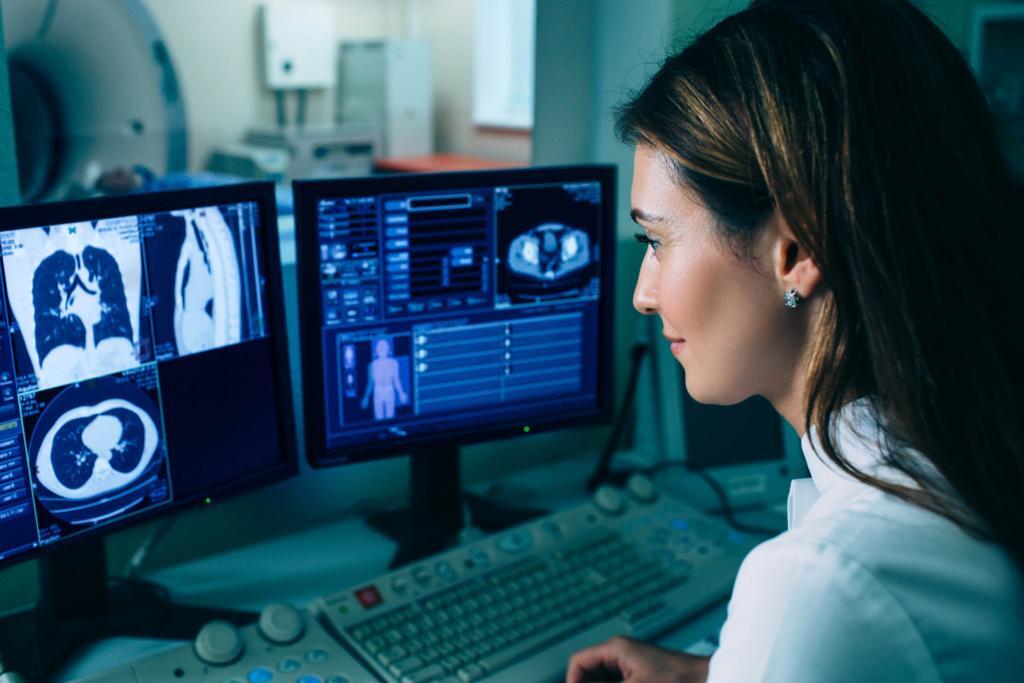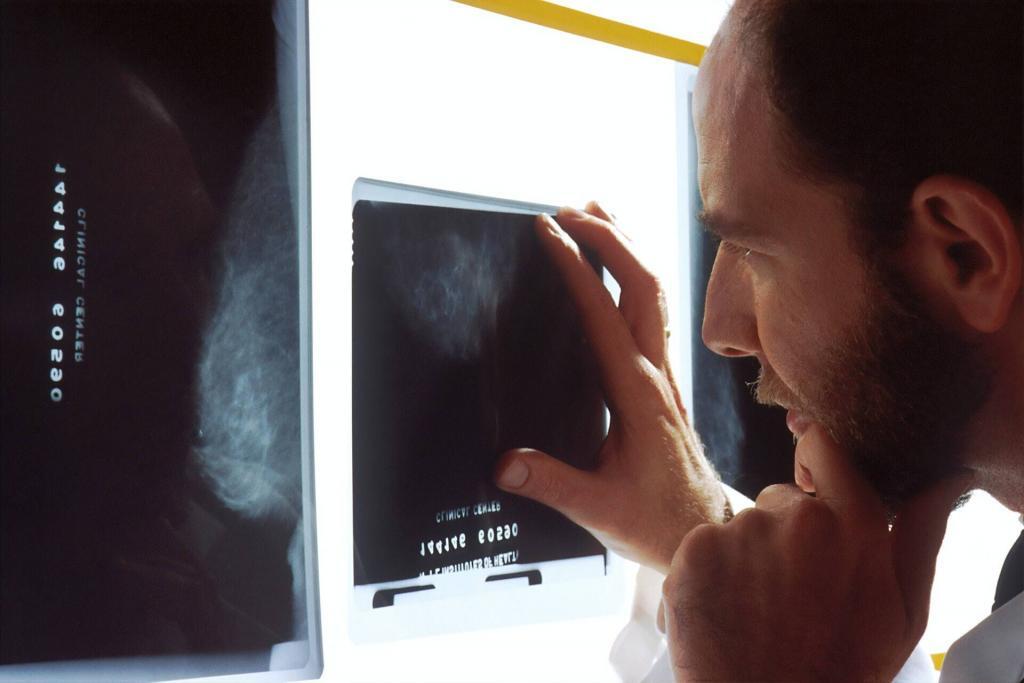Radiologists are medical practitioners who operate X-rays and other machines with high radiation. They help identify if there is anything that we should be concerned about regarding our health. If you’ve experienced getting an X-ray, you know it can be a little terrifying seeing the sign outside an X-ray room saying, “Do not enter when the red light is on.” This is to protect you from radiation.
Besides being trained on using these machines and reading medical images, their job includes ensuring patients’ safety when getting an X-ray. If it sounds like a lot of work, that’s because it is. And for doing a lot of essential medical work, then you might be wondering “how much does a radiologist make an hour?” The simple answer is a lot.
Are you curious about other high-paid jobs in the same field? Maybe consider a career as a Proctologist or an Anesthesiologist.
Table of Contents
Why You Should Consider Becoming A Radiologist
Their Income
In the U.S.A. a radiologist’s average annual salary is typically around $200,000, with the lowest averaging $60,000. This is data from the Medscape Physician Compensation Report. It’s no wonder why it is in the top three highest-paid jobs in the medical field.
A radiologist is one of the highest-paid jobs in the medical field. Source: National Cancer Institute
If you’re wondering high it can get, a radiologist can earn up to $500,000 annually or even more. But only around 16% of radiologists earn this, and they usually practice a subspecialty like ultrasonography or radiation oncology.
Another question you’re probably asking is “How much does a radiologist make an hour?” to make that much in a year. Well, based on data reported by HR departments in the U.S.A., a radiologist’s average hourly wage is usually between $178 and $236.
The salary also varies in each state, which is no surprise. New York tops the list in terms of the average salary per state, at $385,917, with an hourly wage of $185.54. A radiologist’s salary in North Carolina (NC) ranks the lowest at $242,652, with an hourly wage of $116.66.
At this point, the salary is probably already making you consider becoming a radiologist, and we don’t blame you because it is a six-figure amount. The job is financially rewarding, but you might wonder why they get paid that much.
Take a look at their jobs and responsibilities:
- They specialize in using X-rays, magnetic resonance imaging (MRI), computed tomography, ultrasound, nuclear medicine, positron emission tomography (PET), mammography, and fusion imaging.
- Also, they analyze X-ray films and other medical images that will help them and other medical experts diagnose and treat certain diseases and injuries.
- They obtain patients’ medical history and/or prepare reports on the results of the diagnostic imaging procedures.
Job Outlook
The procedures that radiologists perform to help patients are becoming quicker and less invasive as technology improves. Because of this, the Bureau of Labor Statistics has projected in their 2019 findings that there will be a 7% growth in the demand for radiologists in the next 10 years.
Are you interested to know how much an anesthesiologist earns in comparison to a radiologist?
A Guide On How To Become A Radiologist

It takes years of study and practice to be able to become a radiologist. Source: unsplash.com
It goes without saying that there would be a lot of work – which includes years of study, training, and getting certified – before you can become a radiologist. Here is a step-by-step guide:
Step 1. You Need To Earn A Bachelor’s Degree
There is not much required in terms of the undergraduate degree to start your career in radiology, but completing several classes and tests is a prerequisite. Some of these classes include biology, both general and organic chemistry, biochemistry, physics, and the likes.
Step 2. Graduate From A Medical School
If you know anyone who has ever been to medical school, you’ll know that graduating from it is easier said than done. It takes years of study and hard work to be able to graduate from medical school.
Step 3. Complete A Clinical Internship
Of course, as a physician who is trained at diagnosing illnesses, you know the process doesn’t end after medical school. Working alongside certified radiologists is one of the many prerequisites before you can be certified yourself.
Step 4. Pass A Licensing Exam.
Depending on where you live and/or where you intend to practice, you may or may not need a license to become a radiologist. But being licensed would make it easier to get a job.
Step 5. Complete A Residency
When you get to this stage, you’re one step closer to becoming a fully certified radiologist. A residency program typically lasts five years, but it also depends on the state and the specialty you intend to practice eventually.
Step 6. Take And Pass Additional Exams
Following the completion of a residency program, you will need to take more exams. But don’t worry, you will finally be certified after passing all of them.
The journey to becoming a radiologist is a long one. All in all, it takes a total of 10 years of education, licensing exams, residency to become a board-certified radiologist.
WATCH VIDEO: So You Want to Be a RADIOLOGIST
What Are Other Options For A Certified Radiologist?
There are many professionals in the medical field. There are probably some you might not have even heard of. After becoming a certified radiologist, other jobs would be available for you, of course, and we have listed them for you below:
- Radiology Assistants – they are the ones who ensure that patients are protected from any unnecessary radiation exposure during medical imaging. They can also work as MRI technologists.
- Radiographer or Radiologic Technologist specializes in operating special machines. These are used for scanning patients for any possible illnesses or injuries. Besides X-rays, they are also knowledgeable in using CT scanners and digital fluoroscopy.
- Diagnostic Medical Sonographers – they are also known as ultrasound technicians or sonographers. Their specialty revolves around the use of imaging equipment to acquire medical images. They analyze these to help in diagnosing medical conditions.
- Radiology Nurse – they help patients prepare for medical imaging using X-rays, ultrasounds, CT scans, and more.
- CT Scan Technologist – they use computerized tomography scanners to create medical images of patients’ tissues and internal organs.
And To Sum It Up…
So, the next time you get an X-ray and get your results and diagnosis within a few minutes, think twice before dismissing it as a fast process. You know that it took these health professionals around ten years of education to do that in a few minutes. It’s not an easy job, but if you’re considering to be one and if your heart is in it, then you will enjoy the process of studying, taking exams, and getting certified.
Do you want to check out other jobs that are in line with biology? Click here.

